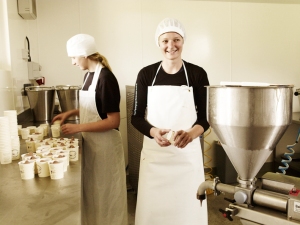 Davidstow, gawd bless ’em, sent me a sample of their of a three-year-old matured cheddar earlier this month and I put it aside in the fridge for later and then forgot about it. I don’t suppose that could do it much harm, as what’s month at the back of the fridge to a cheese that has been around for 36 months already?
Davidstow, gawd bless ’em, sent me a sample of their of a three-year-old matured cheddar earlier this month and I put it aside in the fridge for later and then forgot about it. I don’t suppose that could do it much harm, as what’s month at the back of the fridge to a cheese that has been around for 36 months already?
I unwrapped it from its brown paper and inhaled.
I love Davidstow cheese, methinks as I sniff deeper…. I would happily put myself of an Atkins-style Davidstow only diet if they would supply me enough cheese to support this radical experiment…
My ‘three-year old’ looked at little dry around the edges but I rather like my cheese when it goes a little crunchy. It wasn’t long before a curious teenager with a more receptive nose than I turned up and started to nibble the slithers I’d been grating.
“I like that, can I have some more?” he asked. My answer was pretty short. This cheese was gold (it took three years to mature, remember?) and I knew I wasn’t going to get anymore of it.
So what to do with it? I reckoned on the theory that the stronger and tastier the cheese the further it will go. I’m about half way through my wedge now but it has been used to enhance two family meals so far. Continue reading












